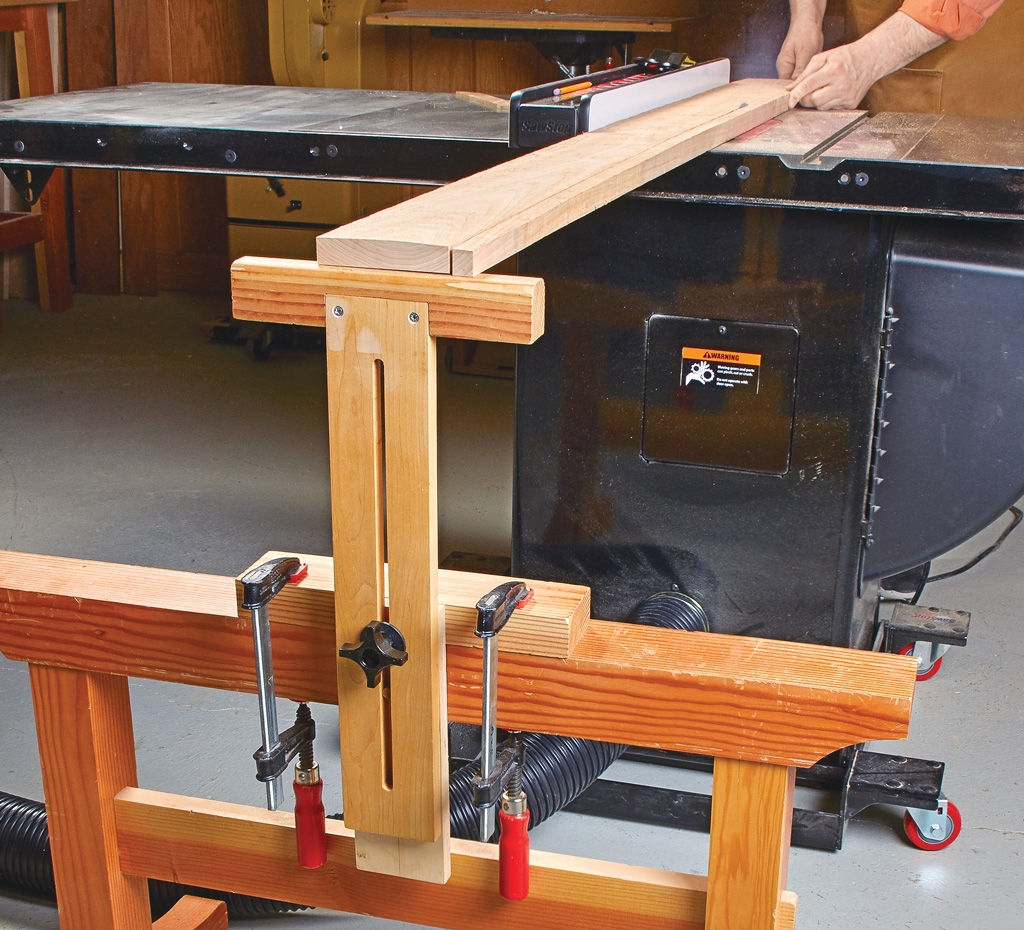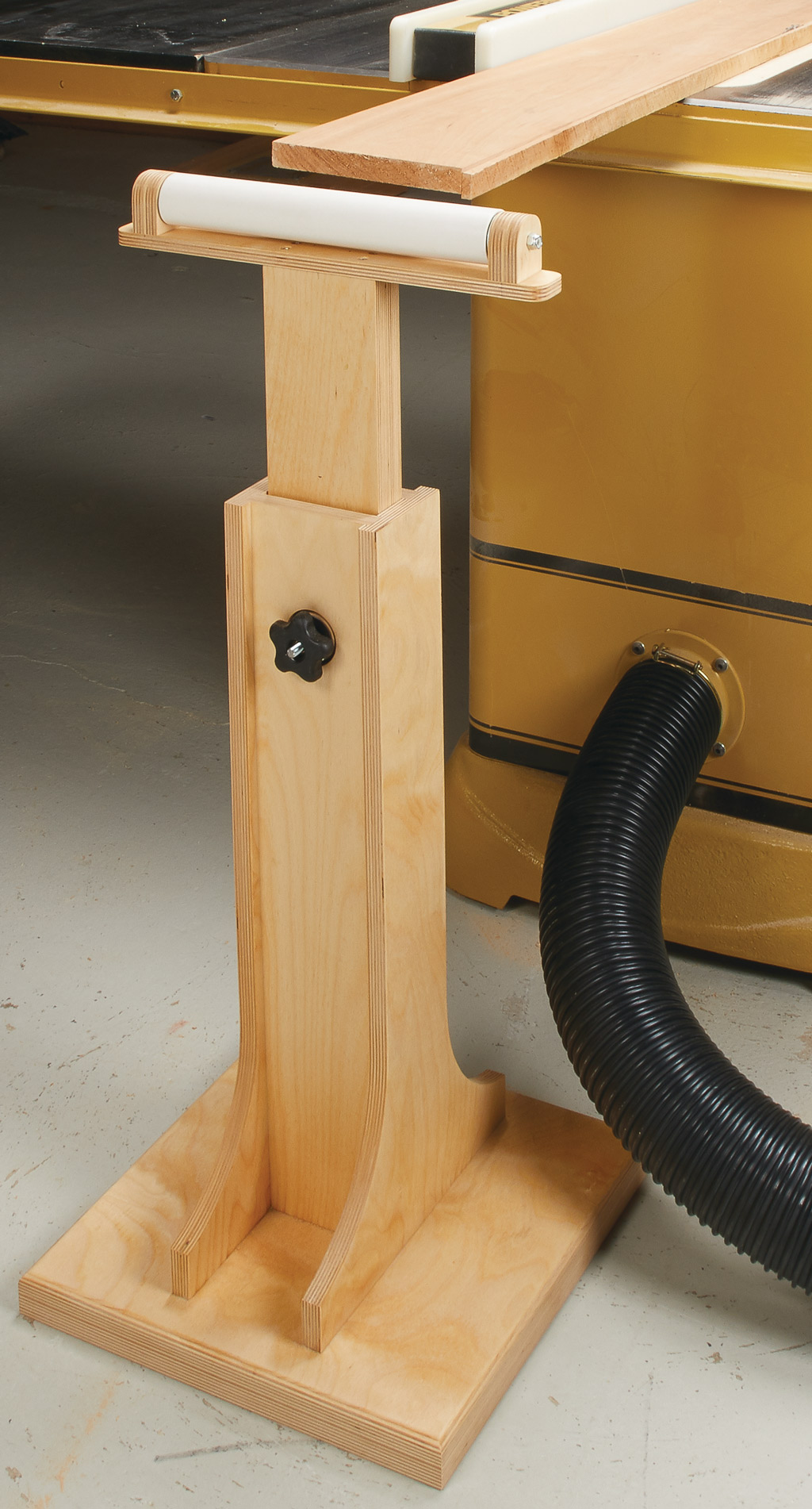
Miter joints appear to be simple at first glance - just two 45° cuts. But if you've ever made a mitered frame, you know there's a bit more to the process than just making the cuts.
For perfect-fitting miters, you'll need to start by making sure your saw and miter gauge are well tuned. Keeping the workpieces oriented properly during the cuts can prevent tearout. Plus, the order of the cuts make a difference. I'll talk more about that later. My first step is to check the saw settings.
SETTING UP THE SAW
There are a number of settings on a table saw that can change over time due to vibration, saw dust accumulation, or lack of proper lubrication. So before I make the first cut, I check the saw settings to be sure my saw is running at peak performance. The checks include aligning the blade with the miter gauge slots, checking the angle stop, the fit of the miter gauge in the slot, and the accuracy of the miter gauge head.
BLADE ALIGNMENT Your saw will work at its best if the blade is perfectly parallel with the miter gauge slots. If it's not, you'll see cuts with burned or uneven edges. Checking blade alignment is something that needs to be done on a regular basis, since vibrations in the saw can cause changes in alignment. So even if you've checked the setting before, now is a good time to check it again. Each saw is different, so you'll need to refer to your owner's manual for the proper adjustments. After the blade is aligned, you can check that it's square to the table.
SQUARE THE BLADE If the saw blade isn't square with the tabletop, the cuts you make won't be square either. And that means miter cuts won't have a tight fit. But there's a simple way to fix this.
The 90° stop on your table saw determines where the blade will stop in the upright position. But the stop can shift out of adjustment, so check this setting with a square before making a cut.

The easiest way to test for a blade that's square with the table is to follow the steps in the drawing above. I use a scrap piece to start the process. After making a crosscut, turn one end over and check for a gap between the ends. If the two pieces butt perfectly, you're in good shape. If you do find a problem with the 90° stop, just make a small adjustment. Then continue to make test cuts and adjustments until the joint is tight. After the stop is set, you can move to setting up the miter gauge.

MITER GAUGE SETUP After repeated use, the miter gauge bar can wear down and possibly have too much play in it. The gauge should glide effortlessly in the slot without much movement from side to side. If you notice any play in the gauge, there's a quick way to fix this. Take a look at the drawing for more information. After you've determined that the gauge moves smoothly, you can add an auxiliary fence to the gauge.
__ AUXILIARY FENCE__ Adding an auxiliary fence on the miter gauge is probably the most important and least expensive accessory you can add to your saw. I always use an auxiliary fence to support the workpiece and prevent tearout. Any square, straight, flat piece of plywood will make a good fence. When the fence is in place, it’s a good idea to add a strip of self-adhesive sandpaper. This helps to keep the workpiece from "creeping" along the fence during a cut.
SET THE DIRECTION
The final part of the setup is setting the direction of the miter gauge. Take a look at the drawings and photo below to see why setting the miter gauge correctly can make a big difference.



SET THE ANGLE The second part of setting the gauge is to make sure it's angled at 45°. But here again, the detent on the gauge may not be accurate. So I use the head of a combination square to check.

NEXT STEP With the saw tuned, you're ready to produce accurate cuts.
Cutting Miters
Setting up your saw properly will get you halfway to flawless miters. The rest is achieved through the cutting process. The process of cutting miters depends on the type of miter you are cutting. There are two types of miters - face (or frame) miters and end (or case) miters. A face miter is simply two mating corners cut at 45°, such as those you would cut for a frame. An end miter has a 45° miter on the end and mates with a matching piece to form a case or box.
Shop Tip:
__ Miter Check__

After making a test cut miter, check that the corners come together to form a true 90° angle. If the miters aren't square, check the settings on your saw and miter gauge again to be certain that you are cutting a true 45°.
FACE MITERS
There's a simple technique I like to use when cutting face miters. I cut the miters on one end of each workpiece and then set up a stop block to miter the pieces to length.

ONE CUT AT A TIME The first cut is pretty simple. Your goal is to miter one end of each workpiece. I make this cut on all four pieces. This way, you won't have to switch back and forth between setups. When you've completed the cut, be sure to slide the workpiece away from the blade before you bring the miter gauge back. This way, you don't take the chance of ruining the cut by pulling the workpiece back across the blade.

HAND POSITION Another thing to keep in mind is applying even pressure as the workpiece passes through the blade. Notice the position of the hands in the drawings below. With the miter gauge on the left side of the blade, I use my left hand to hold the workpiece firmly against the fence and down on the table. Then I use my right hand to push the miter gauge and guide the workpiece through the blade. Working this way will give you more control over the workpiece and the miter gauge. Plus, your hands are in a safe position while operating the saw.

__ SECOND CUT__ The second cut establishes the miter on the opposite end of the workpiece, as well as trimming it to final length. For this reason, you'll need to make sure that the pieces on opposite sides of the frame are the same length. I use a mitered stop block clamped to the auxiliary fence to ensure that the pieces are the same length. The drawing shows the block I made for this purpose. Just place the cut end of the workpiece against the mitered stop block to make the cuts in each workpiece.
There's one thing to note about using this setup. The stop block will trap the workpiece and you won't be able to slide it away from the blade like you did with the previous cuts. You have two options when you finish the cut. You can move the workpiece past the blade and then remove it or you can shut off the saw and wait until it comes to a complete stop after each cut.
END MITERS
The other type of miter is an end miter. This miter is cut across the grain of a workpiece, like those you cut for the mitered corners of a box. This cut is usually made with the saw blade tilted rather than the miter gauge angled. And this requires a slightly different setup on the saw.

__ SETUP__ All the saw checks I've discussed previously still apply to end miters, but there's one other check to make before you start. I always check that the blade is tilted exactly 45° by using the head of my combination square. Wedge the head between the blade and the saw table. There shouldn't be any gap between the two.
The other important setup for end miters is making sure you don't trap the workpiece when you make the cut. This is accomplished easily by positioning the miter gauge so that the blade tilts toward the waste side of the cut (drawing above).

MAKING THE CUT With these two setup tasks complete, you're ready to make the cut. But I don't do it with just one cut. The resistance generated during a heavy cut can cause the blade to distort. For this reason, I like to make a couple passes on the saw. The first cut removes most of the waste material. The second cut shaves off the remaining waste. Making a final, light pass cleans up the cut and removes any inaccuracies. The last thing you want is a dip in the middle of the miter.
__ SMALL PARTS__ The final technique I want to mention is mitering small parts. Check out the box below for some tips on cutting miters on small workpieces using a sled.
By checking your saw first, following the setup procedures, and then using simple tips and techniques, you can cut flawless miters for any project.
How-To:
Cut Small Parts Safely

Small workpieces present a special challenge as they can easily chip, tear out, or break when they contact the saw blade. A simple sled will prevent this from happening and you'll have better control over the workpiece, too.
A sled allows the blade to make the cut while the workpiece is firmly supported by the fence. This results in smoother action and a cleaner cut. And you don't take the chance of running over uneven surfaces on the table with a small part.
As you can see in the photo above, the sled is nothing more than a piece of hardboard with a fence glued on the front and back edges. Then it's clamped to the miter gauge.
I pre-cut the slot kerfs in the sled on the table saw and added a piece of adhesive sandpaper. This will keep a small workpiece from creeping in the sled while you make the cut.












